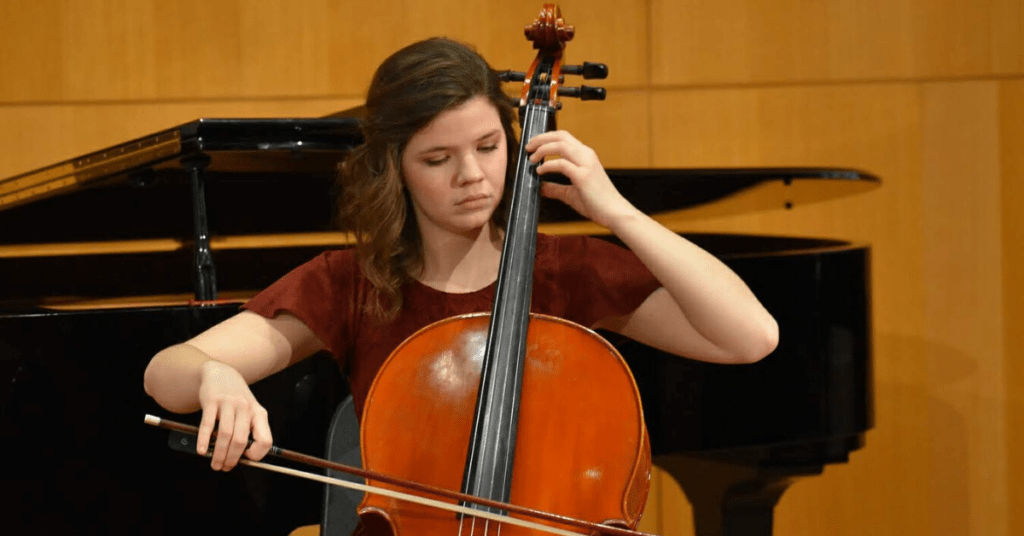Julia Bachorik String Recital Highlights
Under the direction of Mr. Timothy Hammond, Julia Bachorik recently performed her cello recital as part of her music degree with a concentration in String Pedagogy. Here are some highlights of the performance, along with Bachorik’s thoughts about each piece.
Piano Trio in D minor, Mendelssohn
“Schumann declared Mendelssohn to be the ‘Mozart of the nineteenth century.’ Besides his famous octet, this piano trio is considered one of Mendelssohn’s greatest chamber works. In the early stages of writing this piece, Mendelssohn took the advice of his fellow composer, Ferdinand Hiller, to rewrite the piano score giving it a more prominent role and romantic style. The theme is introduced in the cello, answered in the violin, and passes through all parts throughout the trio.”
Kol Nidrei, Bruch
“The title of this piece reveals Bruch’s inspiration for this mournful cello solo. Kol Nidrei (‘All Vows’) is a prayer that is traditionally chanted at the beginning of the service on the eve of Yom Kippur. The opening melody is the melody that the Kol Nidrei is traditionally sung to, and, because of this connection, many assumed Bruch was of Jewish descent. Despite the composer’s denial of this, his music was restricted by the Nationalist Socialist Party, and his compositions were largely forgotten in German-speaking countries. Bruch’s goal in this piece was for the cello to imitate the rhapsodic voice of the cantor who led in the chants. The sighing sound is achieved by a series of two-note slurs in the melody.”
Pièce en Forme de Habanera, Ravel & Bazelaire
“This piece was originally written as a vocalise-etude—a vocal warm-up with the purpose of teaching a specific technique. The technique demanded by this piece, particularly the sweeping scale-like passages, demonstrates the abilities of the human voice. Later the piece was transcribed for cello and piano. This piece plainly displays the fascination that French composers had with Spanish music. The habanera has a distinctive rhythm heard throughout this piece, particularly in the left hand of the piano accompaniment. Over this syncopated rhythm Ravel weaves the evocative melody.”


